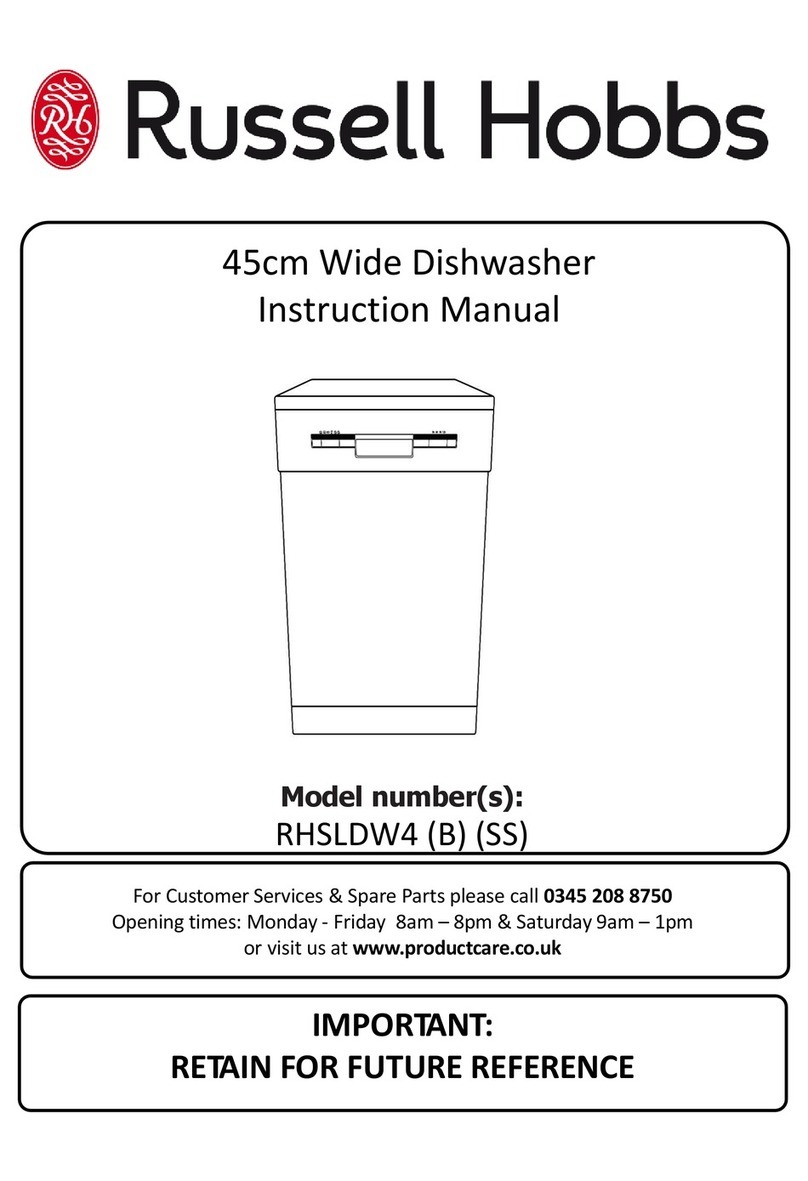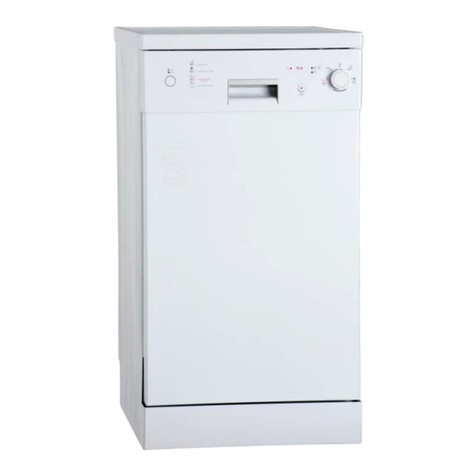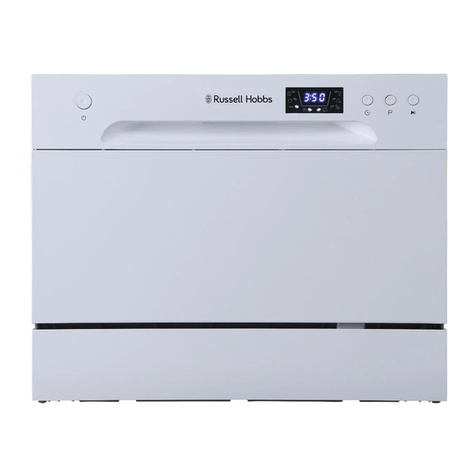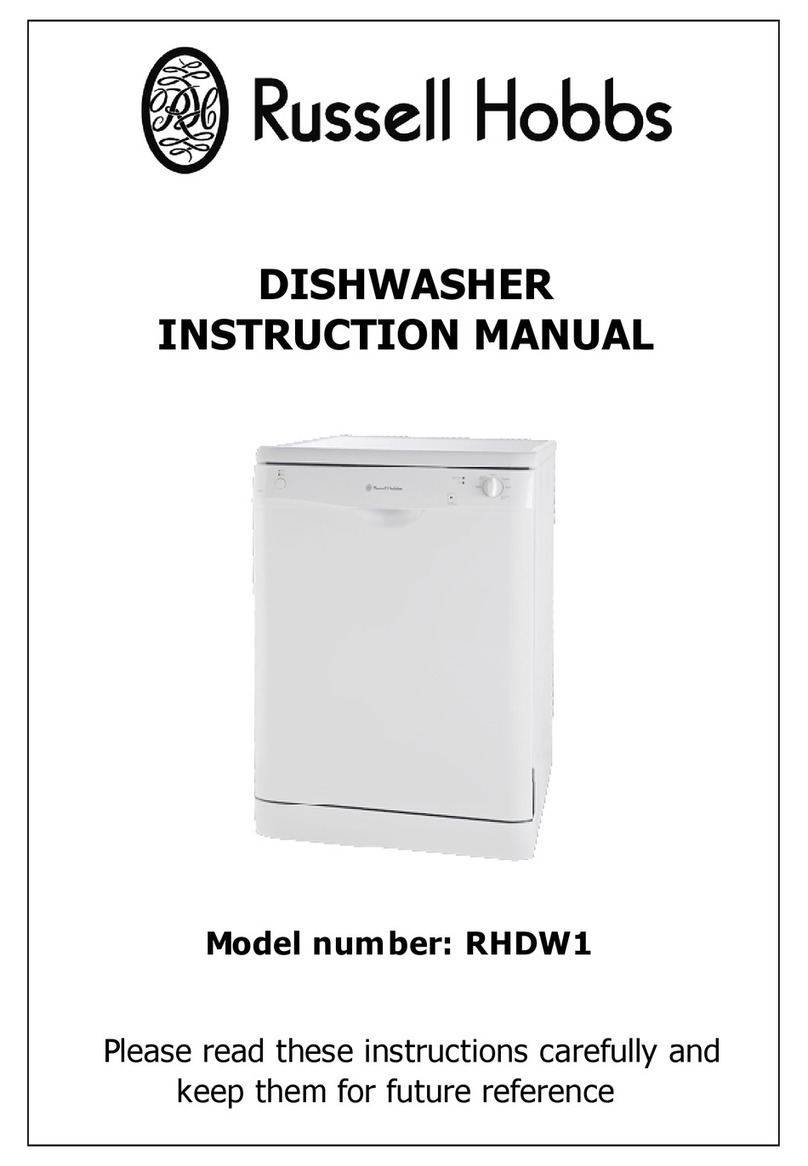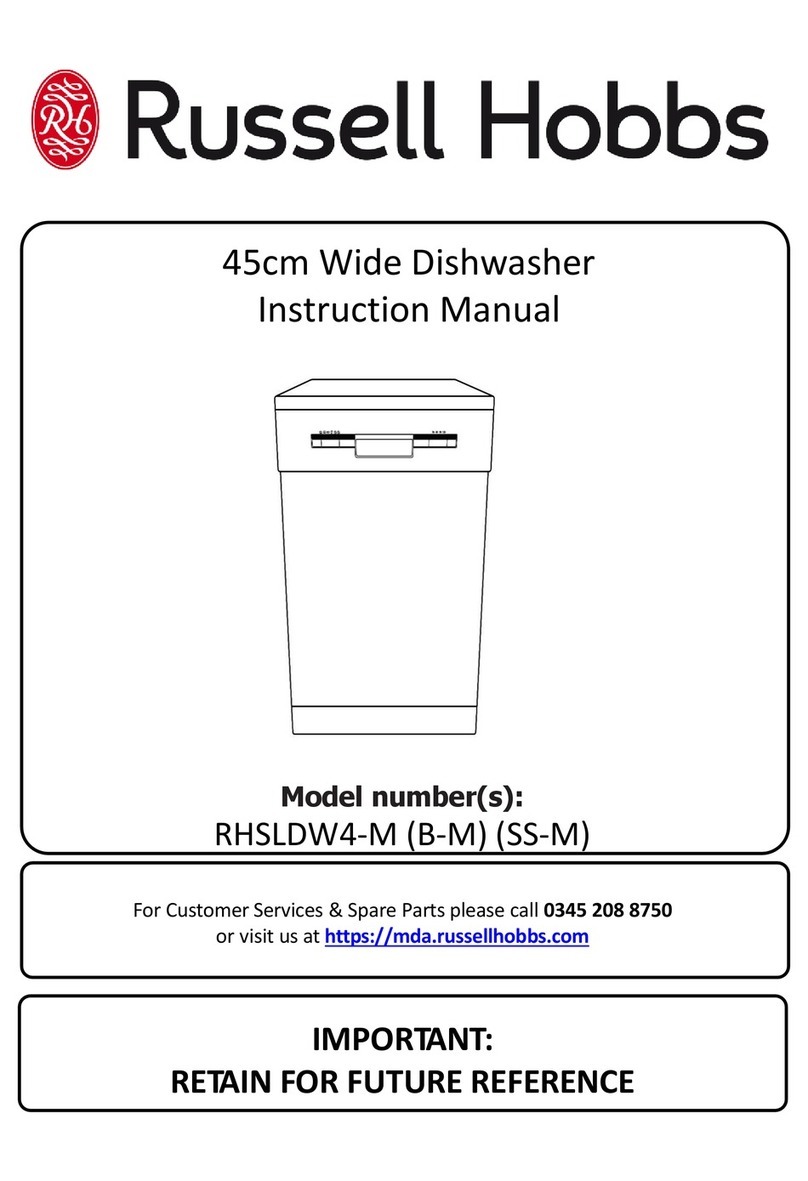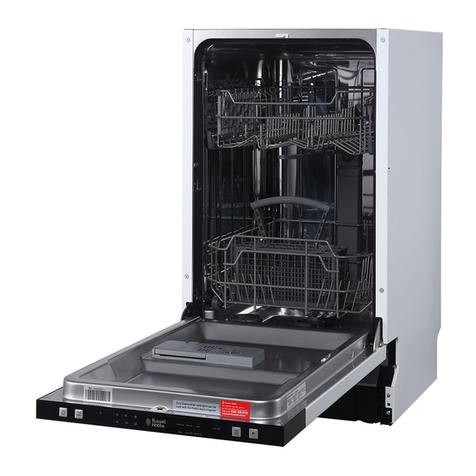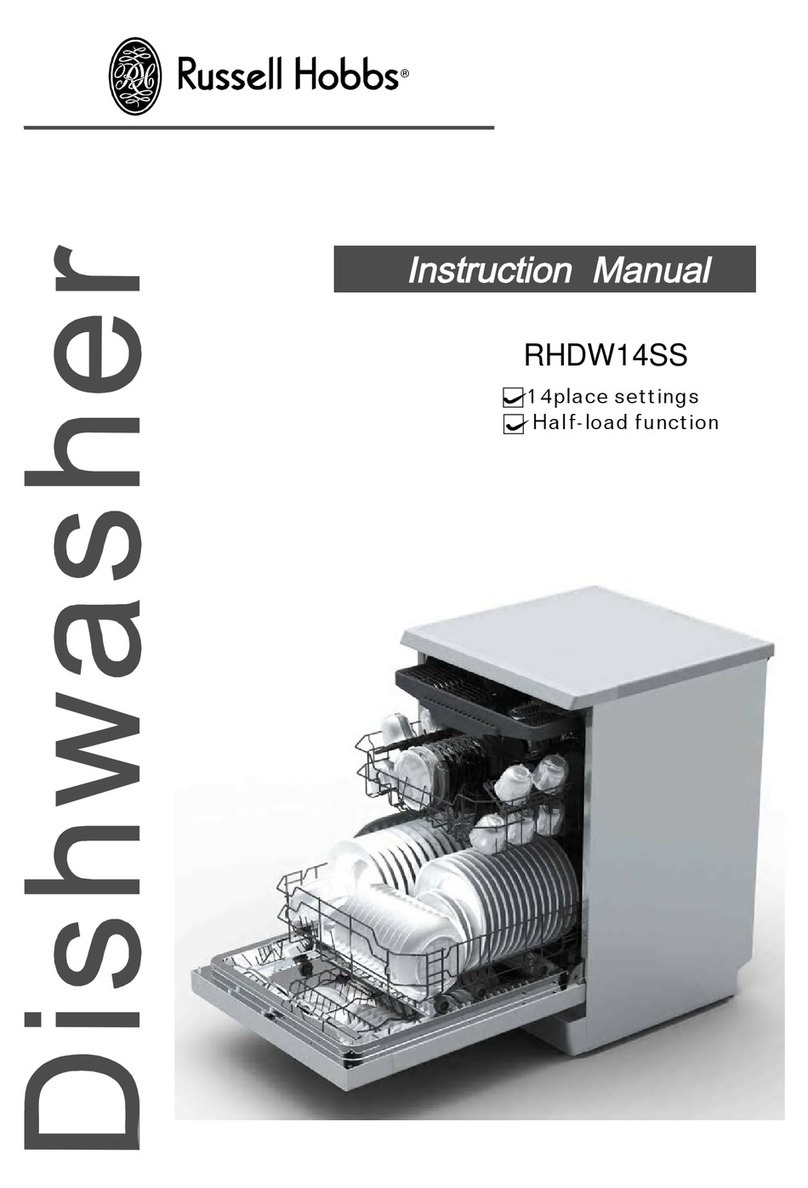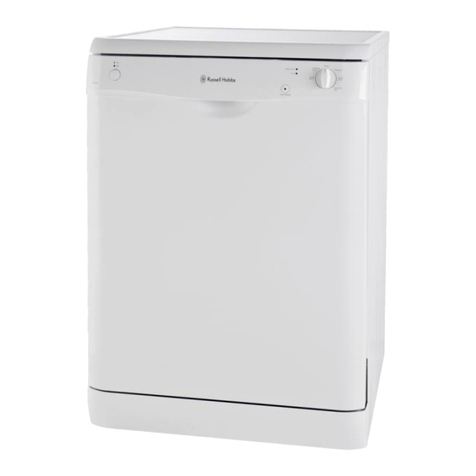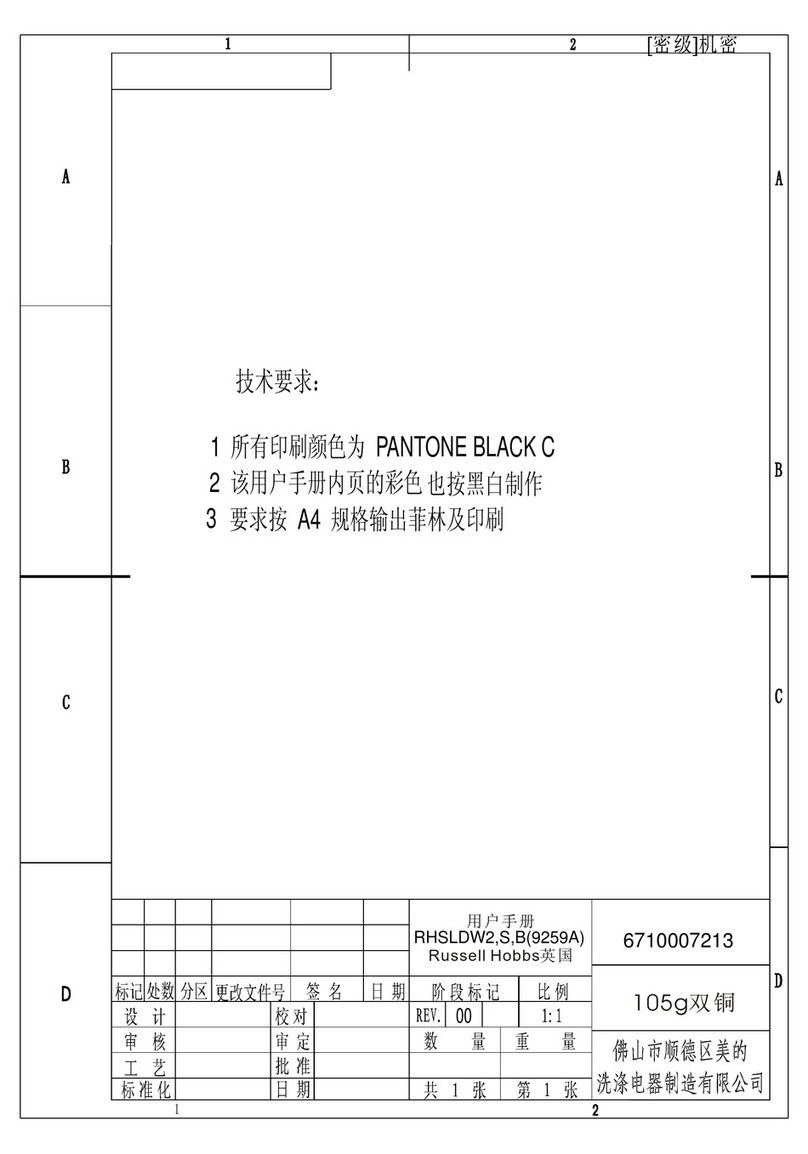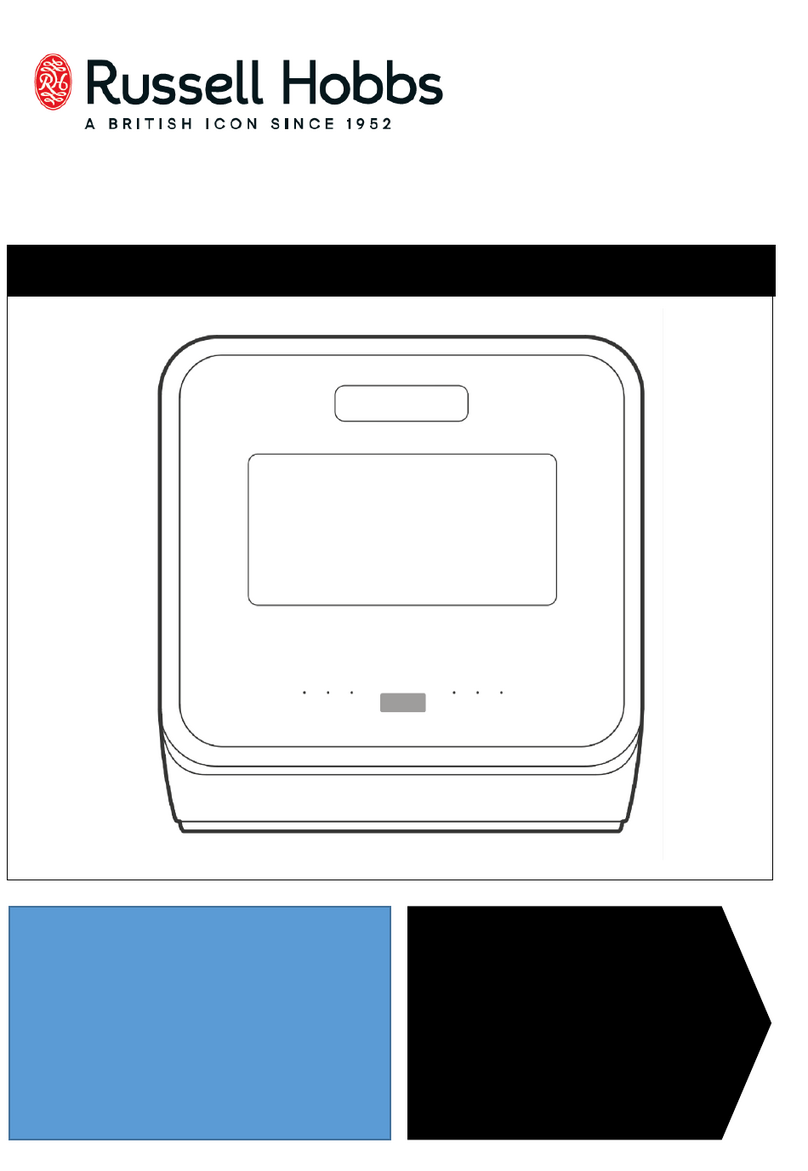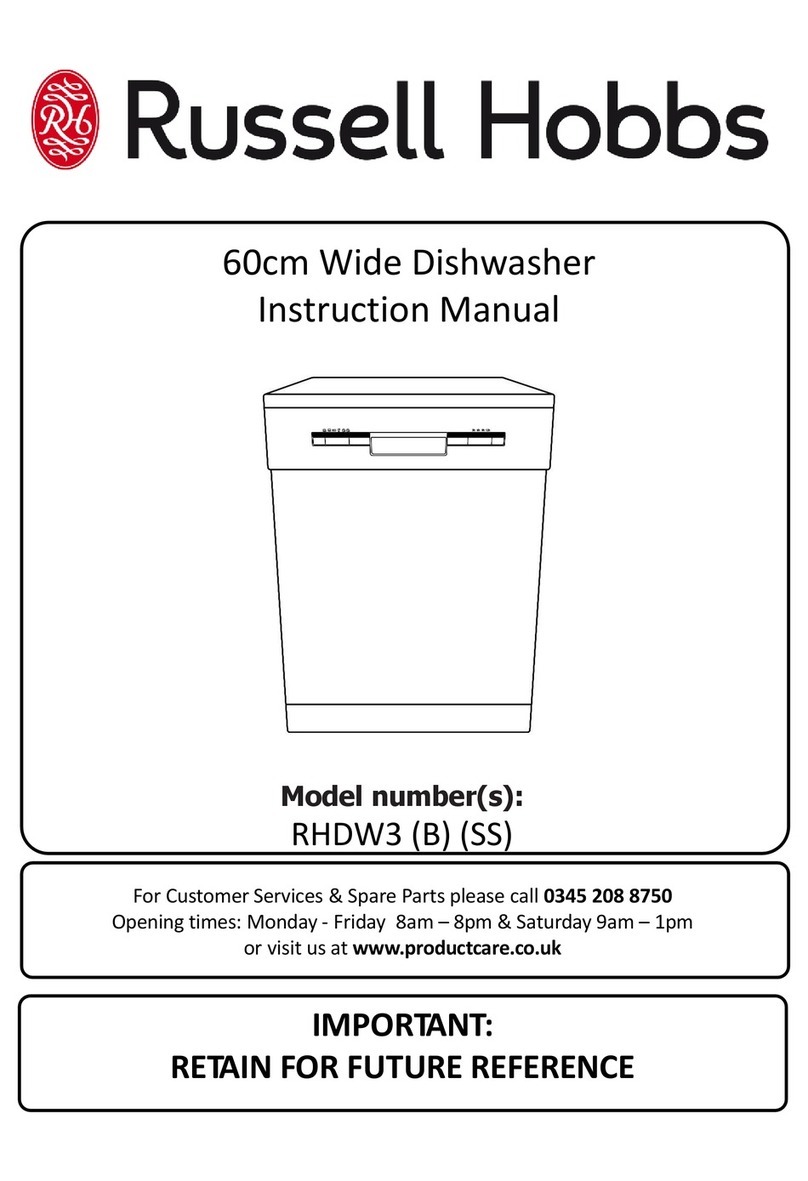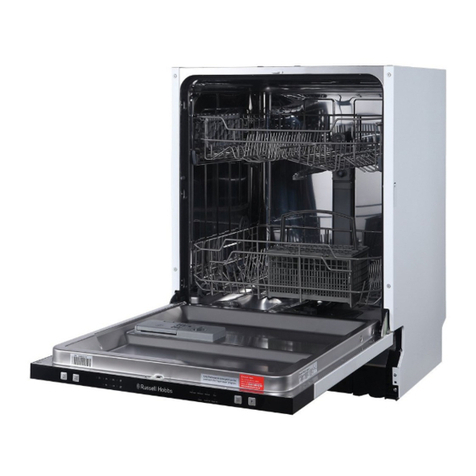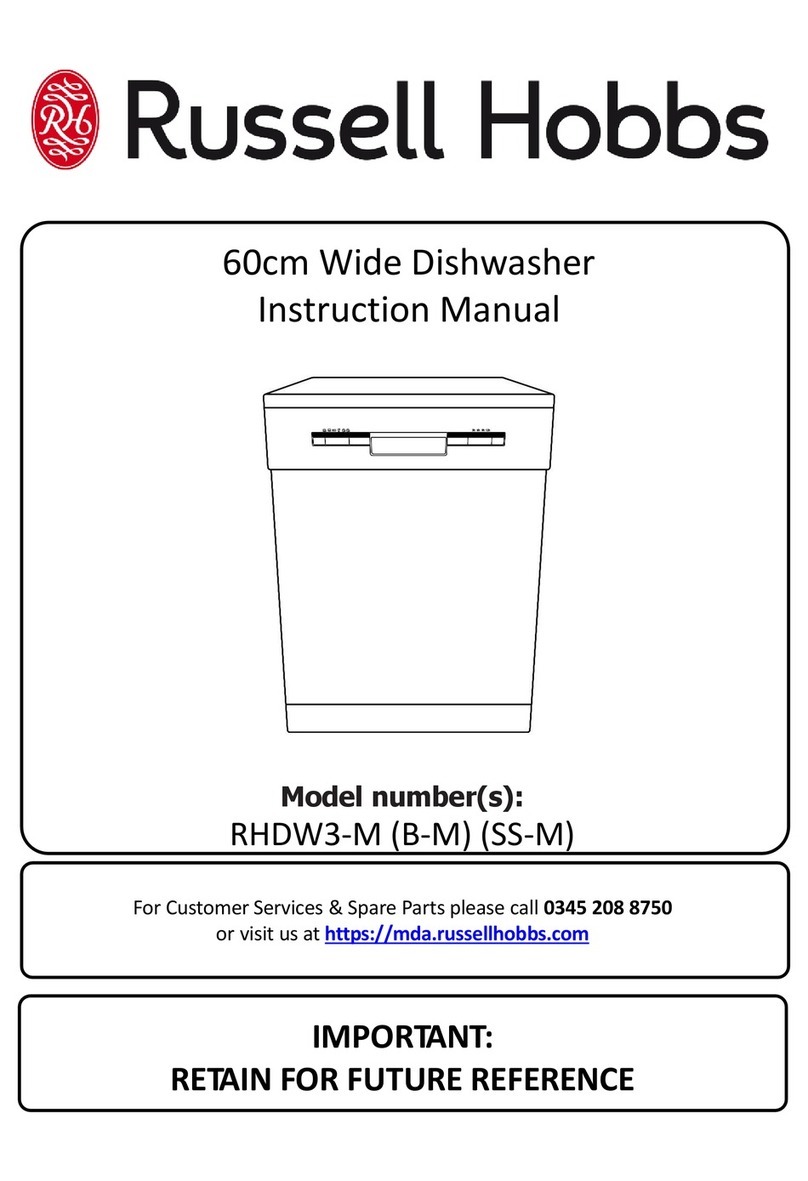3
Safety Instructions
The appliance was designed and manufactured in compliance with current international safety
standards. The following information has been provided for safety reasons and should therefore
be read carefully. Keep this instruction manual in a safe place for future reference. If the
appliance is sold, given away or moved, please ensure the manual is kept with the machine, so
that the new owner may benefit from the advice contained within it.
Please read this instruction manual carefully: it contains important information regarding the
safe installation, use and maintenance of the appliance.
•The appliance was designed for domestic use inside the home and is not intended for
commercial or industrial use.
•Use the dishwasher onlyfor its intended function.
•This appliance is not intended for use by persons (including children) with reduced physical,
sensory or mental capabilities, or lack of experience and knowledge, unless they have been
given supervision or instruction concerning use of the appliance by a person responsible for
their safety.
•Children should be supervised to ensure that they do not play with the appliance.
•DO NOT allow children to play with the appliance or tamper with its controls.
•The appliance must be used by adults only, to wash domestic crockery according to the
instructions in this manual.
•If the appliance breaks down, do not under any circumstances touch the internal parts in an
attempt to carry out the repair work yourself.
•It is hazardous for anyone other than a competent person to carry out any service or repair
operation that involves the removal of the cover.
•Do not tamper with the controls.
•If the supply cord is damaged, it must be replaced by the manufacturer, its service agent or
similarly qualified persons in order to avoid a hazard.
•Duringinstallation, the power supply cable must not be excessively or dangerously bent or
flattened.
•The appliance must not be installed outdoors, even in covered areas. It is extremely
dangerous to leave the machine exposed to rain and storms.
•Do not touch the appliance when barefoot.
•When unplugging the appliance always pull the plug from the mains socket, do not pull on the
cable.
•The water supply tap must be shut off and the plug should be removed from the electrical
socket before cleaning the appliance or carrying out any maintenance work.
•The door should not be left open as it may create a dangerous obstacle.
